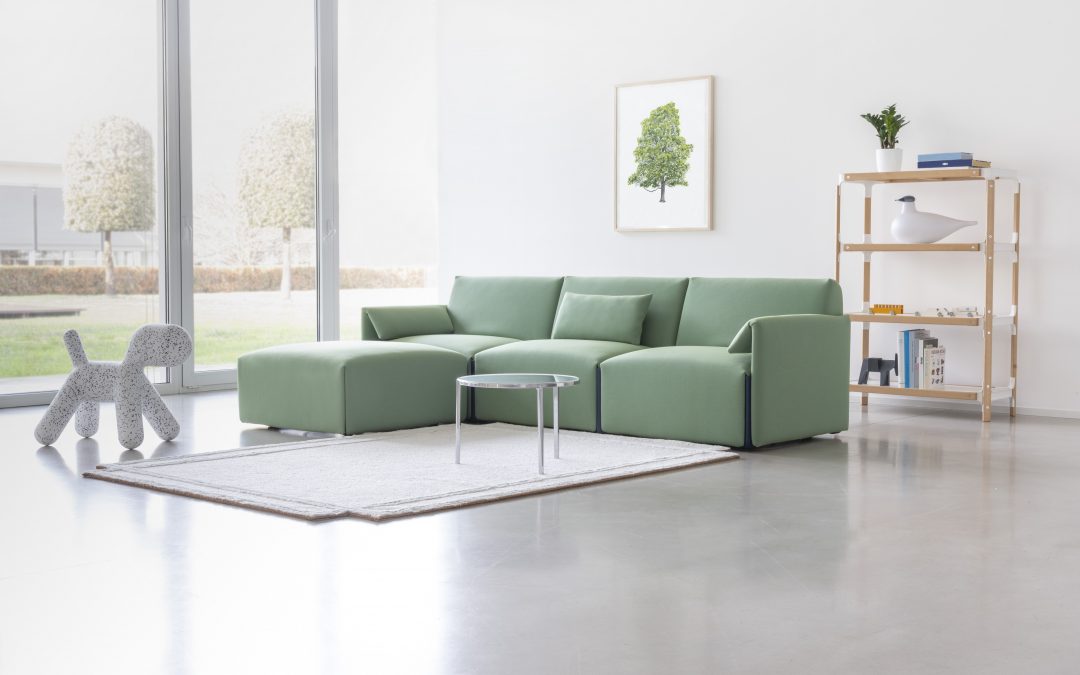Relentless enthusiasm, imagination and dedicated passion turned into no less than four years of designing a sofa system. What does it take to turn a simple challenge into this pragmatic, transformable new Costume sofa system that protects our planet’s resources?
Up until now there were two ways of constructing a sofa. Either it consisted of a wooden frame with a structure of belts, spring core, foam and upholstery or it was based on a metal frame with built-in suspension, which was filled with foam, covered with foam padding and upholstered.


Both variations have one thing in common: it takes a lot of effort and expense to repair them, the materials are difficult or impossible to separate and the sofa contains large quantities of foam that cannot be recycled.

Stefan Diez above
Magis collaborated with designer Stefan Diez to develop individual components of the modular sofa that aren’t permanently attached to each other. This means it can easily be dismantled, for cleaning or if new upholstery needs to be purchased.
At the heart of Costume is a body made from recycled and recyclable polyethylene produced using rotational-moulding technology from furniture and car industry waste. An insert made of pocket spring cores provides the cushioning for the seat and backrest. On top of this is a thin layer of polyurethane foam. The whole is held together by a cover made of fabric that can be fastened on using tension belts and easily removed at any time.
While modular sofas are usually designed as a construction kit featuring many different elements, Costume comes with a total of just four different elements: the actual seating module, which can be completed with a left or right armrest and an ottoman.
A connector of plastic, which is pushed into the slots on all four corners of the seat, serves to connect the pieces. Available in matching as well as in contrasting colours, it becomes an aesthetic feature. The four elements-seat, armrests and ottoman can be assembled to form numerous combinations depending on requirements and space.
And if circumstances change, for example moving house, the elements can simply be regrouped and extended using individual parts so that the sofa can fit in with the new living environment.


The system uses much less foam in manufacturing than conventional sofas – most of the materials are easily recyclable. This concept allows Costume to live up to Magis’ claim to develop products that use materials in a responsible way. However, for his first project for Magis, designer Stefan Diez not only redesigned the construction of the structure, he also optimised the sofa system concept.


habitat: How important is the system approach to you?
Stefan Diez: Systems are something like an alphabet. For me, it’s not so much about providing ready-made answers, but about building bricks with which you can formulate words, sentences and stories. Systems are not static and can always be reinterpreted. The individual building units can be further developed and improved separately. I see an interesting logic behind this, which fully exploits the potential of industrial production and industrial design.
A sofa has to withstand a lot, especially in families. The fact that the core of the sofa can be easily separated from its cover is not only an advantage for the user, by the way because sofas only become recyclable through their modular construction.
We make the sofa bodies from recycled plastic! That’s entirely in the spirit of the circular economy. At the moment, industrial waste is recycled for the production of the sofa bodies. In the near future, Magis will also have old packaging shredded and processed to make new Costume elements.



h: How would you describe your co-operation with Magis?
SD: A project is always a journey together. Magis understands like few others in the industry how to make the journey itself the goal and to skilfully steer the view between details and perspective.
h: How would you describe your studio’s work?
SD: We prefer to get involved in projects where the result is unpredictable. We believe that the way to innovative solutions is through technical know-how, the right instinct and a lot of experimentation. The results may be complex, but never complicated.



